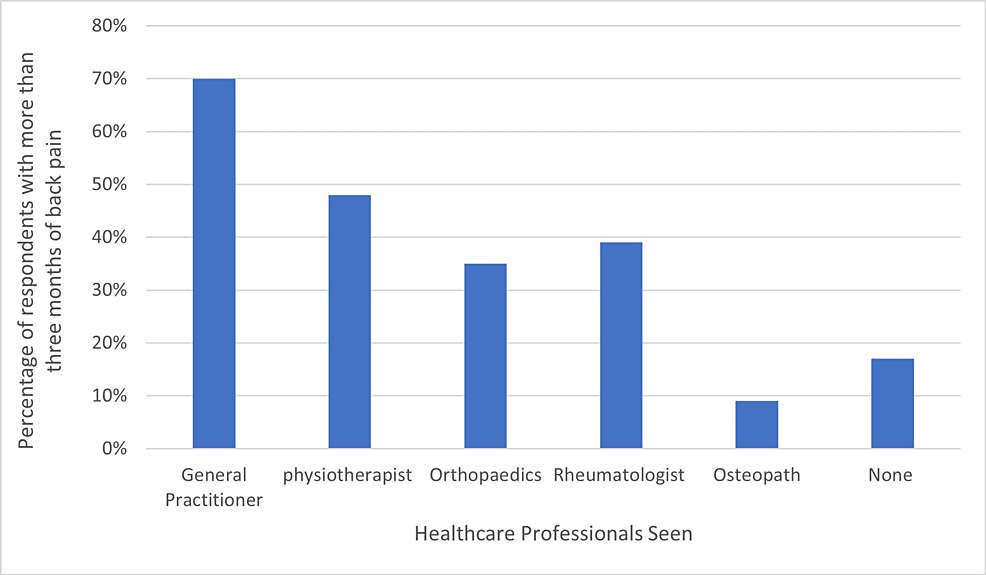
READ HERE
A Patient Survey Exploring the Burden of Inflammatory Back Pain in Patients With Known Psoriasis
Watts S, Nagib L G, Bamford S, et al. (January 09, 2024) A Patient Survey Exploring the Burden of Inflammatory Back Pain in Patients With Known Psoriasis. Cureus 16(1): e51968. doi:10.7759/cureus.51968 10.7759/cureus.51968
Background
In the United Kingdom, diagnostic delay remains a challenge in axial spondyloarthritis (axSpA). Psoriasis is a frequently identified extra-musculoskeletal manifestation associated with axSpA. In this study, we aimed to determine the prevalence of inflammatory back pain (IBP) in psoriasis patients at a specialized psoriasis dermatology clinic in a London NHS Trust. Our primary goal was to identify psoriasis patients with IBP who were not referred to a rheumatologist, potentially leading to axSpA diagnostic delays. Additionally, we aimed to investigate factors contributing to these delays and strategies to address them.
Methodology
A patient survey consisting of 22 questions was used to assess the prevalence of IBP among 66 psoriasis patients attending a weekly specialized psoriasis dermatology clinic within a London NHS Trust between May and July 2023. The survey comprised patient demographic information along with inquiries about the existence of back pain exceeding three months. The Berlin Criteria was utilized to identify IBP among patients who reported experiencing back pain for over three months. Additionally, the survey sought information on prior diagnosis of axSpA and whether participants had consulted healthcare professionals regarding their back pain.
Results
Of the 66 patients invited, 51 (77%) completed the survey. The average age of the patients was 50 years (range = 19-74 years), with 58.8% being female. The mean duration of psoriasis was 15.7 years (range = 2-44 years). Overall, 45% (23/51) reported back pain lasting over three months. Among the patients who reported back pain for more than three months, 13 met the Berlin Criteria for IBP (25% of the total surveyed), and only four of these patients had a diagnosis of axSpA. Notably, seven patients (14% of the total surveyed) potentially had undiagnosed axSpA. General practitioners (GPs) were commonly consulted for back pain, yet only 39% of those with prolonged back pain had seen a rheumatologist. Despite experiencing prolonged back pain, 17% of patients had not sought healthcare advice for their symptoms.
Conclusions
This study highlights that IBP is a common yet underdiagnosed comorbidity in psoriasis patients. Dermatologists, GPs, and other allied healthcare professionals play a crucial role in detecting early axSpA. However, limited awareness of IBP hinders its identification in psoriasis patients and subsequent referral to rheumatologists. This highlights the need for improving awareness and education regarding axSpA among dermatologists and allied healthcare professionals as well as the public and patients to ensure timely diagnosis. The development of simple and easy-to-administer screening questionnaires to aid non-rheumatologists in identifying patients with IBP together with simplified referral pathways would increase onward referrals of appropriate patients to rheumatologists.



